Biography
Jean Michel Basquiat (1960-1988)
Born in Brooklyn, New York, Basquiat’s mother, Matilde, was Puerto Rican and his father, Gerard Basquiat is of Haitian origin and a former Haitian Minister of the Interior. Because of his parents’ nationalities, Basquiat was fluent in French, Spanish, and English from an early age. He read in these languages, including Symbolist poetry, mythology, and history. At an early age, Basquiat displayed an aptitude for art and was encouraged by his mother to draw, paint and to participate in other art-related activities. In 1977, when he was 17, Basquiat and his friend Al Diaz started spray-painting graffiti art on buildings in lower Manhattan, adding the infamous signature of “SAMO” (i.e., “same old shit”) see: SAMO© Graffiti entry. The graphics were pithy messages such as “Plush safe he think.. SAMO” and “SAMO as an escape clause”. In December 1978, the Village Voice published an article about the writings. The SAMO project ended with the epitaph “SAMO IS DEAD” written on the walls of SoHo buildings.
Basquiat attended Edward R. Murrow High School in New York. In 1978, Basquiat dropped out of high school and left home, a year before graduating. He moved into the city and lived with friends, surviving by selling T-shirts and postcards on the street, and working in the Unique Clothing Warehouse on Broadway. By 1979, however, Basquiat had gained a certain celebrity status amidst the thriving art scene of Manhattan’s East Village through his regular appearances on Glenn O’Brien’s live public-access cable show, TV Party. In the late 1970s, Basquiat formed a band called Gray (the name being a reference to the book Gray’s Anatomy), with Shannon Dawson, Michael Holman, Nick Taylor & Wayne Clifford. Gray played at clubs such as Max’s Kansas City, CBGB, Hurrahs, and the Mudd Club. Basquiat worked in a film Downtown 81 (a.k.a New York Beat) which featured some of Gray’s rare recordings on its soundtrack. He also appeared in Blondie’s video “Rapture” as a replacement for DJ Grandmaster Flash when he was a no-show.
Basquiat first started to gain recognition as an artist in June 1980, when he participated in The Times Square Show, a multi-artist exhibition, sponsored by Collaborative Projects Incorporated (Colab) and Fashion Moda. In 1981, poet, art critic and cultural provocateur Rene Ricard published “The Radiant Child” in Artforum magazine, helping to launch Basquiat’s career to an international stage. During the next few years, he continued exhibiting his works around New York as well as internationally (alongside other street artists) now in the galleries such as Now Gallery, later promoted by Bruno Bischofberger and other gallery owners and dealers. He later showed at the galleries of Larry Gagosian and Mary Boone.
By 1982, Basquiat was showing regularly, and alongside Julian Schnabel, David Salle, Francesco Clemente and Enzo Cucchi, became part of what was called the Neo-expressionist movement. He started dating an aspiring and then-unknown performer named Madonna in the fall of 1982. That same year, Basquiat met Andy Warhol, with whom he collaborated extensively in 1984-6, forging a close, if strained, friendship. He was also briefly involved with artist David Bowes.
By 1984, many of Basquiat’s friends were concerned about his excessive drug use and increasingly erratic behavior, including signs of paranoia. Basquiat had developed a very serious cocaine and heroin habit by this point, which started from his early years living among the junkies and street artists in New York’s underground. On February 10, 1985, Basquiat appeared on the cover of The New York Times Magazine in a feature entitled “New Art, New Money: The Marketing of an American Artist” As Basquiat’s international success heightened, his works were shown in solo exhibitions across Europe and the USA.
Andy Warhol’s death in 1987 was very distressing for Basquiat, and it is speculated by Phoebe Hoban, in her 1998 biography on the artist, that Warhol’s death was a turning point for Basquiat, and that afterwards his drug addiction and depression began to spiral.
Basquiat died accidentally of mixed-drug toxicity (he had been combining cocaine and heroin, often using cocaine to stay up all night painting and then using heroin in the morning to fall asleep) at his 57 Great Jones Street loft/studio in 1988, several days before what would have been Basquiat’s second trip to the Côte d’Ivoire.

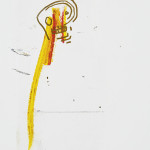 Untitled (Skull)
Untitled (Skull)
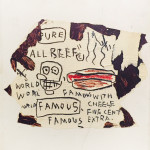 Untitled (sold)
Untitled (sold)
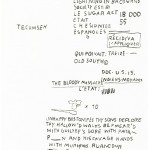 Untitled (Tecumseh)
Untitled (Tecumseh)
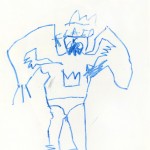 Untitled (FLAID) (sold)
Untitled (FLAID) (sold)
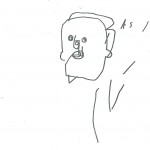 Untitled (Simple Man) (sold)
Untitled (Simple Man) (sold)
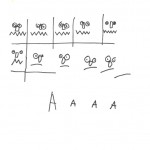 Untitled (Faces) (sold)
Untitled (Faces) (sold)
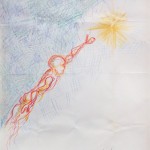 And The Day Divides The Night (sold)
And The Day Divides The Night (sold)
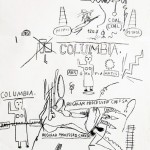 Untitled (sold)
Untitled (sold)
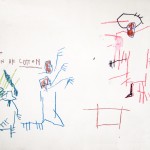 Origin of Cotton (sold)
Origin of Cotton (sold)